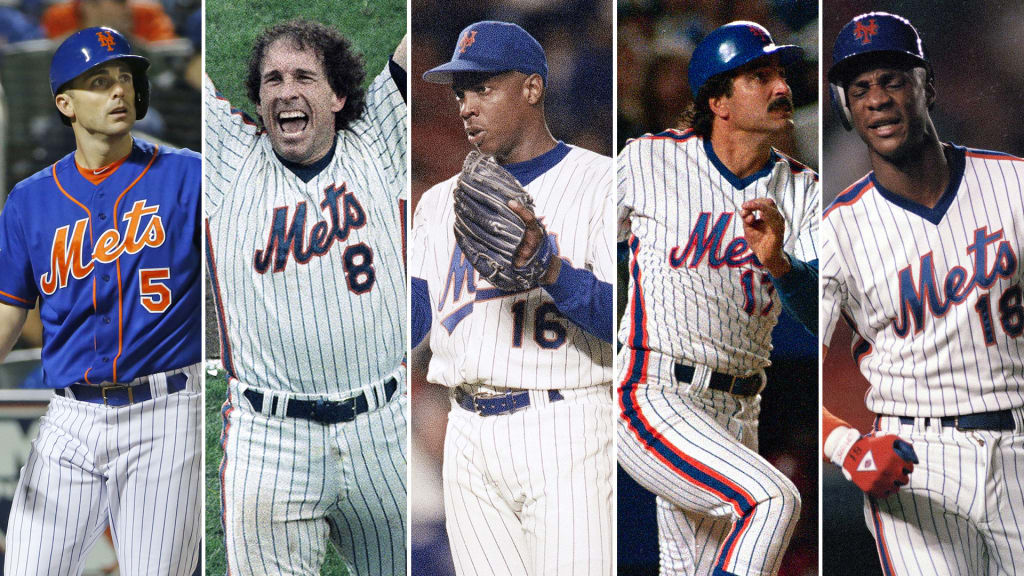
NEW YORK -- When the Mets announced last year that they would retire Jerry Koosman's No. 36, making him the third player and fifth individual to have his number immortalized by the organization, chief operating officer Jeff Wilpon hinted at a relaxing of standards.
For decades, the Mets have been among the strictest teams in terms of retiring numbers, doing so only for the two players in Cooperstown with Mets caps on their plaques -- Tom Seaver (No. 41) and Mike Piazza (No. 31) -- as well as for legendary managers Casey Stengel (No. 37) and Gil Hodges (No. 14). That created a backlog of players like Koosman who were certainly Mets legends, but not quite up to Hall of Fame level.
“I think we see the fans want it,” Wilpon said. “Now that we’re 50 years plus in the making, there’s time to do it. Some guys have cemented themselves. There’s a plan going forward for Hall of Fame and number retirement. We’re going to spread them out, not to overload anything. But I think we have a plan to catch up and do some neat things for the fans.”
In numerical order, here’s a look at who might be next after Koosman:
No. 5: David Wright
It seems a foregone conclusion that Wright’s No. 5 will be retired eventually, and probably sooner rather than later. The Mets’ all-time hits king, position-player WAR leader and one of only four captains in franchise history, Wright is one of the most popular players ever to wear blue and orange. Still, there’s a decent chance he won’t be next after Koosman. Despite his strong career, Wright doesn’t quite have Hall of Fame numbers. The Mets know that. They also know retiring his number will mean opening the door for other non-Hall of Famers in Flushing. The working theory is that the Mets will clear at least some of that queue before retiring No. 5.
(As an aside, the winningest manager in Mets history, Davey Johnson, also wore No. 5. His impact on the franchise is worth noting as well.)
No. 8: Gary Carter
It seems unthinkable that the Mets don’t have a single number retired from the 1986 World Series champions. The Mets issued Carter’s No. 8 to a few players after he last wore it in '89, but the franchise has had it on ice since 2001 -- an honor they never bestowed on players like Koosman, Dwight Gooden and Darryl Strawberry. This one could go either way. On the one hand, Carter played just five seasons for the Mets, going into the Hall of Fame with an Expos cap on his plaque. On the other, few can argue against his enormous impact, serving as a leader of the ’86 team and a captain for two seasons.
No. 16: Dwight Gooden
For now, Gooden remains the second-most accomplished pitcher in franchise history behind Seaver, though Jacob deGrom may soon have something to say about that. The tragedy of Gooden’s career is what he might have accomplished had off-field issues not interfered. Still, Gooden ranks second behind Seaver in career wins and strikeouts with the Mets, and he was an integral part of their 1986 World Series championship. In recent years, Gooden has become something of an informal team ambassador, frequently appearing at events. He remains hugely popular. Since Gooden’s departure, 14 Mets have worn No. 16, including two players as recently as 2018.
No. 17: Keith Hernandez
The greatest first baseman in franchise history, Hernandez won a record 11 Gold Glove Awards and was both the on- and off-field leader of the 1986 Mets. His arrival in '83 made the Mets prominent again, and Hernandez did not disappoint, racking up 939 hits and 80 of his 162 career homers in Flushing. He became the first captain in franchise history, and yet for decades, the team showed little inclination to retire Hernandez’s number. It appears now, at least, the Mets are softening. After giving No. 17 to more than a dozen players after his retirement, the team hasn’t issued the number since 2010. Hernandez’s popularity as an SNY broadcaster and social-media presence cannot hurt his chances.
No. 18: Darryl Strawberry
Like No. 16, No. 18 has been in frequent circulation since Strawberry last wore it in 1990. Could that change? Strawberry is the Mets’ all-time home run king, bashing 252 over eight seasons in New York. A No. 1 overall pick in the '80 Draft, Strawberry was probably the best prospect in franchise history, and he made good on his potential with a '83 NL Rookie of the Year Award followed by eight consecutive All-Star seasons. The last of those came in Los Angeles, however, where he signed as a free agent after the '90 season.


